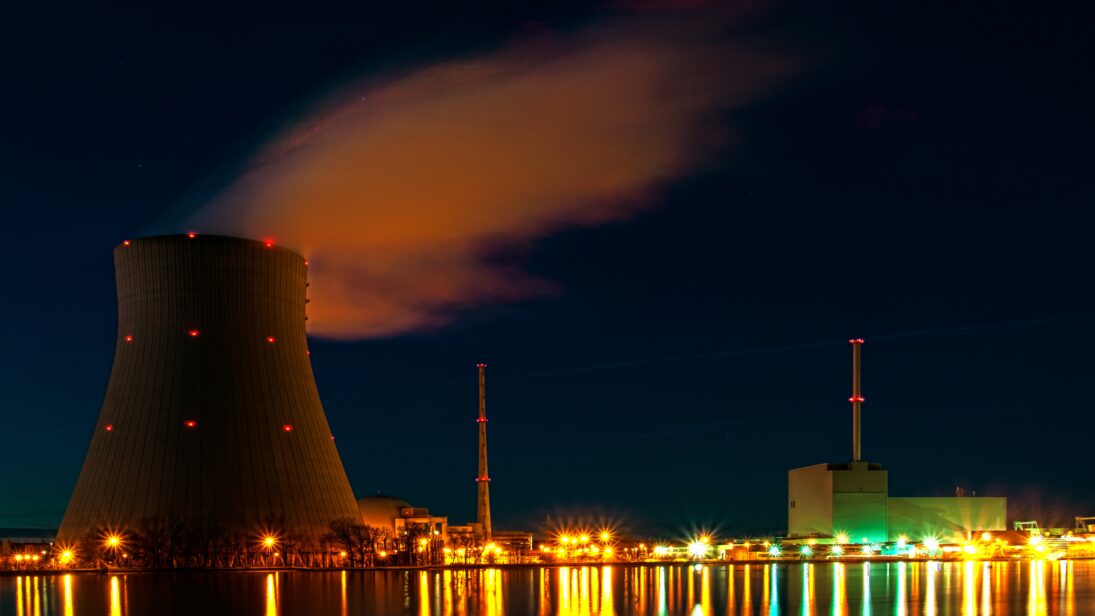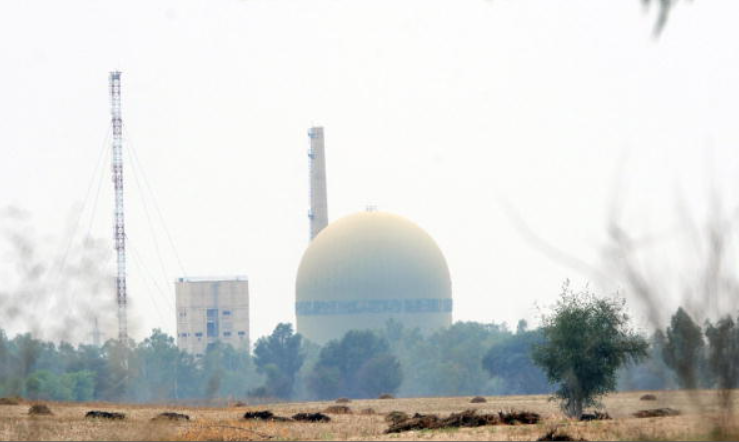
Pakistan is still reeling from the record-breaking heatwaves that hit the subcontinent in April, leading to electricity and water shortages, crop damages, and deaths. The record temperatures are further evidence of the devastating impact climate change has already had on the subcontinent and are a forewarning of increasing climate-induced disasters in the years to come. Pakistan ranks 8th for the countries most impacted by climate change between 2000-2019, and much of South Asia is likely to bear disproportionate costs of global climate change. However, shifting to nuclear energy could help answer Pakistan’s climate woes.
Although Pakistan’s carbon footprint is far less than other developed and developing nations, the impact that Global Greenhouse Gas (GHG) emissions has on Pakistan is devastating. The country can undertake changes to make its energy production more sustainable in the long-term. Currently, around 60 percent of Pakistan’s power comes from unsustainable thermal sources, which contribute to GHGs.1 Pakistan needs to work towards cleaner-energy sources and nuclear energy offers an opportunity. Boosting share of nuclear energy (a zero-emission source) in energy mix offers Pakistan bright prospects of an environment-friendly and equitable power-generation. In the long-term, Pakistan should look for ways to increase nuclear energy’s share in its power production to reduce the harmful impacts of climate change that it faces.
A Move Towards Nuclear Energy
Pakistan’s energy sector relies heavily on fossil fuels, and its emissions are growing in correspondence to the usage of oil, gas, and coal, and the deepening climate crisis.
Global warming places constraints on the efficiency of energy systems. As temperatures rise, there is a larger energy demand owing to an increased use of water- and air- cooling systems. Pakistan’s energy demand has gone from 40 Million Tons of Oil Equivalent (MTOE) to 84 MTOE over the last decade in sync with rising temperatures. Meeting energy demand will therefore require not only a clean but also an efficient energy source.
In the long-term, Pakistan should look for ways to increase nuclear energy’s share in its power production to reduce the harmful impacts of climate change that it faces.
Nuclear energy offers an avenue towards lowering Pakistan’s emissions. It is an efficient source that provides large-scale power reliably without the fear of intermittency—as is the case of wind and solar power. Nuclear energy has the potential to generate energy 90 percent of the time as opposed to wind and solar which only generate energy 25-40 percent of the time. Moreover, inputs in terms of materials required by nuclear energy are thus far lower than other sources.2 And it requires only small amounts of uranium since the efficiency of nuclear fission is 8,000 times that of fossil fuels.
Currently, nuclear energy makes up 9.1 percent of Pakistan’s energy mix (after the addition of the Karachi Nuclear Power Plant (NPP), KANUPP Unit 3), whereas countries like France with a 70 percent share have low emissions from their electricity generation. While nuclear energy has often been criticized for its initial costs of construction—a study from MIT in 2018 examining energy production in the United States found that when factoring the availability of energy from NPPs—as compared to resources like wind and solar which do not always generate electricity—NPPs can be more cost-competitive, particularly when paired with other renewable sources. In addition, a shift to nuclear energy does not necessarily mean abandoning non-renewable energy entirely but substituting it with small-scale NPPs is a feasible option that bears the potential to save Pakistan from future jolts to its energy system.
Nuclear Energy Challenges
However, there are a range of issues that pose a challenge to adopting nuclear energy. Pakistan has been frustrated by what are viewed as discriminatory policies internationally—particularly after the Nuclear Suppliers Group (NSG) granted a special waiver to India and not to Pakistan despite India being a non-signatory of the Nuclear Nonproliferation Treaty (NPT). Additionally, India has experienced several lapses in nuclear security. There has not been an incident of theft of Pakistan’s nuclear weapons or fissile material and the country has taken notable measures to strengthen protections against theft or accident—in fact out ranking India in Nuclear Threat Initiatives security and control indicators. Linking this stance to nuclear proliferation by pioneer of Pakistan’s nuclear program, AQ Khan, is also unfair and misleading because the so-called “Khan network” was international and non-hierarchical and with agents spanning across continents and private industry—moreover, there have been strides in global nuclear security and measures taken within Pakistan on nuclear security issues such as in export controls.

Along with international challenges, another significant challenge is the widespread misconceptions regarding the costs of building NPPs even after studies have shown NPPs to be cost-competitive with thermal plants.3 The vast majority of the studies that report nuclear power as being more expensive than thermal around the world do not account for the cost of environmental damage. As a consequence, thermal power plants such as coal and natural gas are inadvertently presented as cheaper alternatives, which is a grave mistake on the part of policy planners. Another challenge is that Pakistan is a developing country with limited capital available, therefore, it has to rely on partner states like China to finance NPPs as in the case of KANUPP-3.
Expanding Nuclear Energy into Pakistan’s Power Grid
Although these challenges pose some severe pushback, Pakistan has the means and resolve to mitigate them. Pakistan has already improved by 25 points on the Nuclear Security Index (NTI) in terms of the security of its nuclear materials since the index’s launch—the most of any country last year. Furthermore, Pakistan has placed all its research and power reactors under International Atomic Energy Agency safeguards while India has not. There are also reported efforts to develop a nuclear fuel–complex, which will help separate the civilian and military fuel cycle—a frequent objection to international cooperation with Pakistan. While Pakistan has already made a serious commitment to moving forward in nuclear energy securely, the country can also publicize this commitment more, ensure that expense-related problems do not hinder development, and find cheaper ways for building and maintaining NPPs to lower barriers further.
First, Pakistan can make greater use of international forums to highlight the changes it has made. Improvement of international rankings like NTI scores must be continued by introducing even more stringent controls on insider threat prevention and supporting security culture assessments by international bodies. In addition, Pakistan can highlight the strides it has made in nuclear safety post-Fukushima-Daiichi accident. These include reevaluation of seismic activity at NPPs, improving performance of fire brigade in case of fire, installation of emergency cooling mechanisms, emergency preparedness, response drills, and more.
Improvement of international rankings like NTI scores must be continued by introducing even more stringent controls on insider threat prevention and supporting security culture assessments by international bodies. In addition, Pakistan can highlight the strides it has made in nuclear safety post-Fukushima-Daiichi accident.
Meanwhile, Pakistan must also strategize to overcome the unavailability of investments, which has hampered Pakistan’s expansion of nuclear energy. One way that Pakistan can resolve expense-related issues is by lowering the costs for NPP maintenance and development by taking into account foreign studies on cost of NPPs. Clashes between energy departments regarding energy mix policies and funding allocation need to be addressed using an autonomous and integrated energy ministry.
The city of Karak in Pakistan has one of the largest uranium mines which can ensure energy sufficiency. Such indigenous reserves will reduce Pakistan’s reliance on other states for the supply of reactor fuel, as in the case of traditional fossil fuels. Pakistan should therefore capitalize on nuclear energy by building uranium mills where these deposits are in concentration.
Why the Time for Nuclear Energy is Now
Global warming serves as a wake-up call for Pakistan to ramp-up efforts towards enhancing the share of nuclear energy in its energy mix to address rising GHGs. A period of at least seven years is required to build a NPP and it is therefore important to make strides towards development in the near-term if Pakistan wants to reach carbon neutrality by 2050. Despite all challenges, Pakistan has planned that its nuclear energy’s share will be increased to 40,000 MW by 2050, as per Energy Security Plan of Pakistan, which is a move in the right direction.
This ensures reduced emissions, subsequent cooling of environment and reduced heatwaves. Resultantly, the energy demand will fall, followed by energy prices. Use of clean energy coupled with sustainable prices will better the living standards of the citizens. This can only be made feasible by an integrated energy ministry working in unison towards achievement of carbon neutrality goals by 2050. However, it is mandatory to mention that reduction of Pakistan’s carbon emissions is meaningless if unified international response from states responsible for highest emissions is lacking. Pakistan’s efforts in this area can help move forward global progress to address climate change and help the world fight off an impending climate apocalypse.
***
Click here to read this article in Urdu.
Image 1: Bjoern Schwartz via Flickr
Image 2: AAMIR QURESHI/AFP via Getty Images
- Coal, gas, and oil respectively made up 14 percent, 26 percent, and 19 percent of Pakistan’s energy sources in 2021.
- As reported in Bill Gates’ book 0How to Avoid a Climate Disaster, a nuclear power plant requires lesser material (concrete, cement, steel and glass) to generate one unit of electricity for building and operationalizing it than solar PV, hydel, wind, geothermal and coal. Bill Gates, How to Avoid a Climate Disaster, (United Kingdom: Penguin, 2021), 85.
- Ibid.


